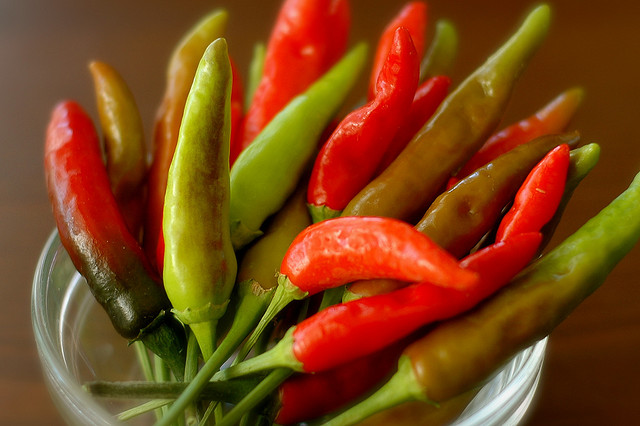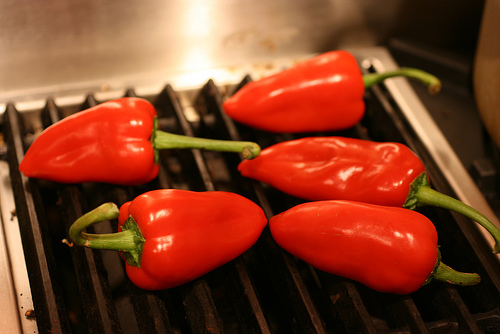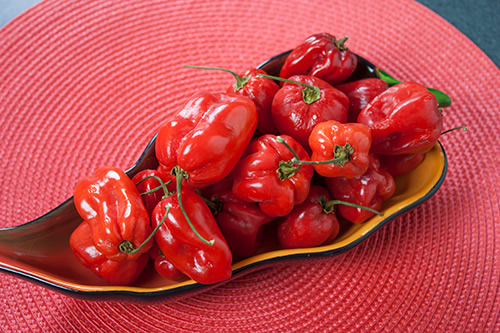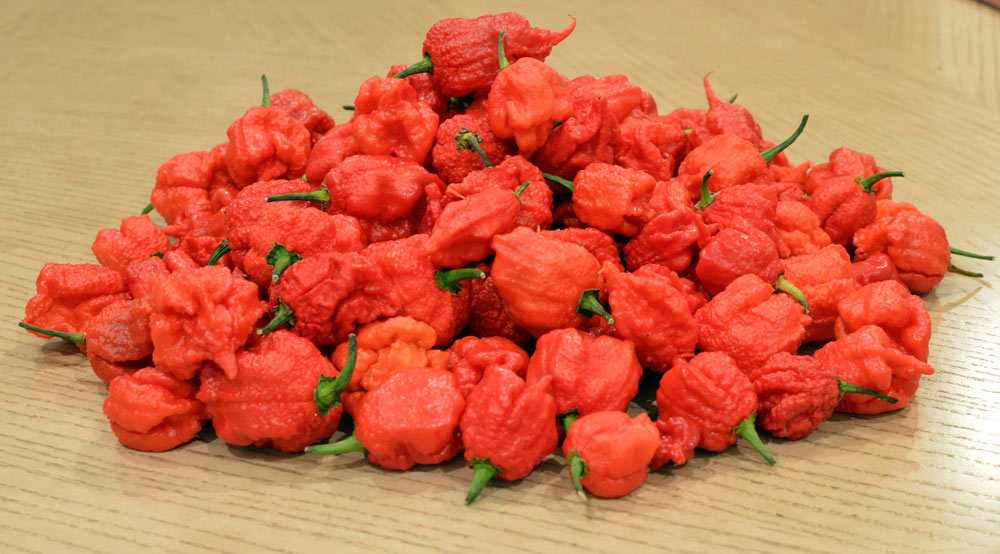What are the hottest peppers in the world?
- Tabasco Pepper- 30,000-50,000 SHU
- Pequin Pepper- 100,000-150,000 SHU
- Habanero Chili- 100,00-350,000 SHU
- Red Savina Habanero- 350,000-580,000 SHU
- Carolina Reaper- 1.57 Million SHU
- Trinidad Moruga Scorpion- 1.2 Million SHU
- 7 Pot Douglah- 1.85 Million SHU
No matter what it may be and where it is served – either it be a wedding or a corporate catering – food is food. Known for its variety of choices and variations, every bite a person takes is always a new and pleasurable experience.
Speaking of variations, there’s always a certain way of how you want your food to be served. Whether it be heated at a mild temperature, or for some, even added with a good amount of spice to really kick it up a notch.
However, spicy food may not exactly be a staple choice for corporate catering, although it is usually available upon request. While there are those who are sensitive to the slight burning sensation it causes when it’s consumed, there are actually plenty of people who enjoy eating spicy dishes. There’s just something about the intensity that really heightens the flavor and makes it more enticing than ever before.
Still, it’s important to know when it’s best to serve such dishes, as it depends on who’s going to eat and how spicy they want it to be. After all, you wouldn’t want anyone gasping for air and reaching for a glass of water in extreme panic.
Many spicy dishes wouldn’t be what they are without the addition of its star ingredient: peppers. These popular seasonings are what adds that extra kick we love. Some peppers are only mildly spicy while others are almost painful to ingest – so make sure you use the proper one when cooking! (Check their Scoville Scale Rankings to verify their “hotness”.)
In this article, we’ll be exploring some of the hottest peppers in existence – so serve these to only those who really, really, like spicy food.
Tabasco pepper
30.000-50.000 SHU
Called the Capsicum frutescens, it originates from Mexico and it’s mostly used for Tabasco Sauce (or peppered vinegar). It’s harvested from small bushes with heights that can reach up to a low 1.5m which thrive in heat – they best grow in temperatures that range from 25-30 degrees Celsius, and they’re best taken from their bushes when they’re a bright, ripe, red. They also need a lot of water to grow, but are easy to cultivate. Moreover, they are simply good for dishes which are meant to be pretty spicy, though not too much.
So, the next time you see a bottle of hot sauce made from this eponymous pepper, don’t be afraid to add a few drops to your dish. You’d be surprised at how bearable the heat can be and how tame it is compared to the other papers on this list.
Pequin pepper
100.000-150.000 SHU
Under the species Capsicum annuum, it is common in North America and in the northern parts of South America. Its bush grows up to 0.3 to 0.6 meters tall and the fruit itself is no bigger than the palm of one’s hand. It is often used as an ingredient in main dishes, as well as in salsas, sauces, and vinegar.
The Cholula brand hot sauce lists Pequin peppers as one of its main ingredients alongside Arbol peppers.
Habanero chili
100.000-350.000 SHU
Mexico popularized this chili and is, by default, also its biggest producers (especially in the Yucatan Peninsula). Like the aforementioned Pequin pepper, it’s also often used for sauces and salsas, though those made with these are significantly hotter. Its name means “something or someone from La Habana” (or Havana – the b and v are interchangeable in the Spanish Language.)
Red Savina Habanero
350.000-580.000 SHU
This one is uncommon, though its spiciness did not go unnoticed at all. Developed by Frank Garcia of GNS Spices (from Walnut, California), it was so hot that it was crowned the hottest chili in the world by the Guinness World Records in 1994.
However, it only held the title for a modest 12 years before it was displaced by the Naga Jolokia pepper.
Carolina Reaper
1.57 million SHU
With a Scoville rating in the millions, it is no wonder that the Carolina Reaper is currently the crown king of all the others. It was created by Ed “Smokin’” Currie – the man who runs the PuckerButt Pepper Company located in South Carolina, USA – through breeding a ghost pepper and a red Habanero.
It is an exceptionally hot chili and should only be considered under special circumstances as the consumption of overly-hot foods may cause injury. Regardless, an extraordinary case happened on September 2014, when a man named Jason McNabb was able to eat 3 of it in 10 seconds!
Trinidad Moruga Scorpion
1.2 Million SHU
Now this is where the peppers really kick it up a notch! With at least 6 digits to their SHU, the Trinidad Moruga Scorpion is one pepper that should not be taken lightly.
Think about it: In recent times, there has been a rise in popularity in various challenges, especially when it comes to eating some of the hottest peppers in existence. So, imagine eating this spice for sport. You’re going to need a lot of milk to quench the heat that is sure to invade your body upon ingestion.
But, if you do survive the heat, imagine the bragging rights you’ll gain from accomplishing this feat. Just remember to always keep caution when doing this.
7 Pot Doughlah
1.85 Million SHU
For many people, the number ‘7’ is considered a lucky one. Now imagine the shock upon hearing about how much heat this little pepper pack.
Originally, the heat that this spice may catch you off guard. Regardless, it will give you all the thrill you need, and as long as you’re really careful, this pepper may just spice up your day in all the right ways.
Key Takeaway
Chilis are a wonderful addition to any dish, though make sure not to overdo it. After all, everything is best in moderation.









